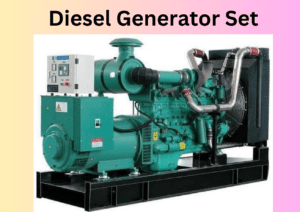The technical specification of UPS and requirements for the design, supply, installation, and commissioning of Uninterruptible Power Supply (UPS) systems. The UPS systems are designed to provide reliable and continuous power to critical loads in industrial and commercial environments. The scope includes the capacity of the UPS like 150 KVA, 100 KVA, and 50 KVA UPS systems, all with three-phase input and output configurations. These are used for the uninterruptible power supply required in the critical instruments of the Pharmaceutical industry.
General
This specification defines the technical requirements for the design, manufacture, testing, inspection, supply, and delivery of UPS systems. It ensures the systems meet operational needs and comply with all relevant standards and codes.
Scope of Work
The scope includes the design, fabrication, assembly, testing, and supply of UPS systems. The systems will support critical loads such as lighting, data centers, network equipment, telecom systems, PLCs, and other sensitive equipment.
Service Conditions

The UPS systems and batteries will be installed in ventilated technical areas or separate rooms. The environment is industrial and dusty, with potential condensation due to temperature variations in humid tropical climates.
Electrical System
The UPS systems will operate under the following conditions:
- Voltage Variation: ±10%
- Frequency Variation: ±3%
General Information
The UPS systems will be designed and manufactured in accordance with applicable codes and standards. All materials and components will be new, and the systems will be constructed with replaceable subassemblies for ease of maintenance.
Codes and Standards
The UPS systems will comply with the following standards:
- IS 2147: Degree of protection provided by enclosures for low-voltage switchgear and control gear.
- IS 4237: General requirements for switchgear and control gear.
- IS 8623: Factory-built assemblies of switchgear and control gear.
Technical Specifications of UPS
Input Supply
- Voltage: 415 V AC ±10%, 3-phase, 4-wire
- Frequency: 50 Hz ±3%
- Input Power Factor: 0.95 lagging at 100% load
Output Supply
- Voltage: 415 V AC, 3-phase
- Voltage Tolerance: ±1% (static), ±2% (dynamic)
- Frequency: 50 Hz
- Waveform: Pure sine wave
Protections and Alarms
- Overvoltage, undervoltage, overload, short circuit, and battery overcharging protections.
- Audible and visual alarms for UPS failure, low battery, and other fault conditions.
Battery System
- Type: Sealed Maintenance Free (SMF) Valve Regulated Lead-Acid (VRLA)
- Capacity: Sufficient for 15 minutes of backup at full load
- Charging: Float and boost charging with automatic switching
General Requirements
- Cooling: Forced air cooling with internally mounted fans.
- Enclosure: IP20-rated cabinet with dust-tight gaskets and lockable wheels.
- Wiring: Control and power wiring to be color-coded and securely held in position.
Modes of Operation
The UPS systems will operate in the following modes:
- Normal Mode: Power supplied by the inverter with the battery on float charge.
- Battery Mode: Power supplied by the battery during mains failure.
- Bypass Mode: Load transferred to bypass source during overload or fault conditions.
Spares
The vendor will provide a list of recommended spares for two years of trouble-free operation. Commissioning spares will be included with the equipment shipment.
Deviations
Any deviations from this specification must be explicitly stated in the vendor’s quotation and approved by the client before the order is placed.
Information, Data, Documents, and Drawings
The vendor will submit detailed drawings, technical catalogs, and operation manuals for approval. This includes general arrangement drawings, schematic diagrams, and foundation details.
Inspection and Tests
All UPS systems will undergo routine tests at the manufacturer’s facility. These tests will include visual inspections, electrical operational tests, and performance verification under simulated conditions.
Guarantee
The UPS systems will be guaranteed for 12 months from the date of commissioning or 18 months from the date of arrival at the site, whichever is earlier.
Packing and Transport
The UPS systems will be shipped in sections suitable for easy handling and installation. Each container will be clearly labeled with the contents, client’s purchase order number, and item number.

Field Services-Maintainability (Optional)
The vendor will provide field services, including maintenance training and preventive maintenance contracts. Site testing and start-up procedures will be conducted by factory-trained personnel.
Specific Requirements / Data Sheet
UPS Specifications
- Type: Online, double-conversion
- Efficiency: >90% at full load
- Noise Level: <65 dB at 1 meter
- Isolation Transformer: Provided at the input side
Battery Specifications
- Type: SMF VRLA
- Capacity: As per vendor’s calculation for 15 minutes backup
➡️Check your knowledge about the DG set🧠🧠
Conclusion
The UPS systems specified herein are designed to ensure uninterrupted power supply to critical loads in industrial and commercial environments. The systems will comply with all relevant standards and codes, providing reliable and efficient operation. The vendor’s adherence to this specification will ensure the successful implementation and long-term performance of the UPS systems.
Frequently Asked Question (FAQ)
What is the specification of UPS?
The specification of a UPS includes details such as:
- Input Voltage: Range (e.g., 220V ±10%).
- Output Voltage: Stability (e.g., 220V ±2%).
- Power Rating: Capacity in kVA or kW (e.g., 1kVA, 5kVA).
- Waveform: Pure sine wave or modified sine wave.
- Battery Backup Time: Duration (e.g., 10 minutes, 1 hour).
- Efficiency: Percentage (e.g., >90%).
- Protections: Overload, short circuit, overvoltage, undervoltage.
- Cooling: Forced air or natural cooling.
- Standards: Compliance with ISO, IEC, or other certifications.
What are the features of UPS?
Key features of a UPS include:
- Pure Sine Wave Output: Ensures compatibility with sensitive electronics.
- Automatic Voltage Regulation (AVR): Stabilizes voltage fluctuations.
- Battery Backup: Provides power during outages.
- LCD Display: Shows real-time status (input/output voltage, load, battery).
- Protections: Overload, short circuit, and surge protection.
- Energy Efficiency: High efficiency to reduce power loss.
- Scalability: Modular designs for expanding capacity.
- Remote Monitoring: RS232, USB, or Ethernet interfaces for monitoring.
How to understand UPS specs?
To understand UPS specifications:
- Power Rating: Check kVA or kW to determine load capacity.
- Input/Output Voltage: Ensure compatibility with your power supply and equipment.
- Backup Time: Match with your runtime requirements.
- Waveform: Pure sine wave for sensitive devices, modified sine wave for basic appliances.
- Efficiency: Higher efficiency means lower energy loss.
- Protections: Look for overload, short circuit, and surge protections.
- Standards: Ensure compliance with safety and performance standards.
What are the parameters of UPS?
Key parameters of a UPS include:
- Input Voltage Range: e.g., 220V ±10%.
- Output Voltage: e.g., 220V ±2%.
- Frequency: e.g., 50Hz ±0.1%.
- Power Factor: e.g., 0.9 lagging.
- Total Harmonic Distortion (THD): e.g., <3%.
- Backup Time: e.g., 10 minutes at full load.
- Efficiency: e.g., >90%.
- Cooling Method: e.g., forced air cooling.
What is the UPS standard?
UPS standards include:
- ISO 9001: Quality management.
- IEC 62040: Performance and safety standards for UPS systems.
- IEEE 446: Recommended practice for emergency and standby power systems.
- CE Marking: Compliance with European safety standards.
What is inverter specification?
Inverter specifications include:
- Input Voltage: DC voltage range (e.g., 12V, 24V, 48V).
- Output Voltage: AC voltage (e.g., 220V).
- Waveform: Pure sine wave or modified sine wave.
- Efficiency: e.g., >85%.
- Power Rating: Capacity in watts or kVA.
- Protections: Overload, short circuit, and over-temperature.
What are the 4 functions of UPS?
The four main functions of a UPS are:
- Power Backup: Provides electricity during outages.
- Voltage Regulation: Stabilizes voltage fluctuations.
- Surge Protection: Protects connected devices from power surges.
- Frequency Regulation: Maintains stable output frequency.
Why is UPS used?
A UPS is used to:
- Provide backup power during outages.
- Protect sensitive equipment from power fluctuations.
- Prevent data loss and hardware damage.
- Ensure uninterrupted operation of critical systems.
What are the three types of UPS?
The three types of UPS are:
- Offline/Standby UPS: Switches to battery during outages.
- Line-Interactive UPS: Regulates voltage and switches to battery during outages.
- Online/Double-Conversion UPS: Continuously powers devices from the battery, providing the highest level of protection.
What is the working principle of UPS?
The working principle of a UPS involves:
- Converting AC power to DC to charge the battery.
- Inverting DC power back to AC to supply the load.
- Switching to battery power during outages or fluctuations.
How to calculate UPS capacity required?
To calculate UPS capacity:
- Add up the power consumption (in watts) of all connected devices.
- Divide the total wattage by the power factor (typically 0.8) to get the VA rating.
- UPS Capacity (VA)=Total Wattage / Power Factor
- Add a 20-25% buffer for future expansion.
What is the advantage of UPS?
Advantages of a UPS include:
- Uninterrupted power supply.
- Protection against power surges and fluctuations.
- Prevention of data loss and hardware damage.
- Stable power for sensitive equipment.
What is the feature of UPS?
Key features of a UPS include:
- Pure sine wave output.
- Automatic voltage regulation.
- Battery backup.
- LCD display for monitoring.
- Protections against overload, short circuit, and surges.
How to spec an UPS?
To specify a UPS:
- Determine the total load (in watts or kVA).
- Check input/output voltage and frequency requirements.
- Decide on backup time and battery capacity.
- Choose the type (offline, line-interactive, online).
- Ensure compliance with safety and performance standards.
What is the main function of UPS in a computer?
The main function of a UPS in a computer is to:
- Provide backup power during outages.
- Prevent data loss and hardware damage.
- Ensure uninterrupted operation.
How do I read inverter specifications?
To read inverter specifications:
- Check input voltage (DC) and output voltage (AC).
- Look for waveform type (pure sine wave or modified sine wave).
- Note efficiency and power rating.
- Review protections (overload, short circuit, etc.).
How to spec an inverter?
To specify an inverter:
- Determine the load (in watts).
- Check input/output voltage requirements.
- Choose the waveform type.
- Ensure compatibility with batteries and solar panels (if applicable).
What is inverter full details?
An inverter converts DC power (from batteries or solar panels) to AC power. Key details include:
- Input Voltage: DC range (e.g., 12V, 24V).
- Output Voltage: AC (e.g., 220V).
- Waveform: Pure sine wave or modified sine wave.
- Efficiency: >85%.
- Protections: Overload, short circuit, and over-temperature.
What is UPS formula?
The UPS formula to calculate capacity is:
UPS Capacity (VA)=Total Wattage / Power Factor
What is UPS capacity?
UPS capacity is the maximum load (in kVA or kW) it can support. For example, a 1kVA UPS can support up to 800W (assuming a power factor of 0.8).
What is kVA in watts?
kVA (kilovolt-ampere) is converted to watts using the formula:
Watts=kVA × Power Factor
For example, 1kVA at 0.8 power factor = 800W.
What is full form UPS?
The full form of UPS is Uninterruptible Power Supply.
What is switch mode?
Switch mode refers to a power supply design that uses switching regulators to efficiently convert electrical power. It is commonly used in UPS systems for high efficiency.
What is voltage fluctuation?
Voltage fluctuation is a variation in the supply voltage, which can damage equipment. A UPS stabilizes voltage to prevent this.
What is the main function of a UPS?
The main function of a UPS is to provide uninterrupted power and protect connected devices from power issues like outages, surges, and fluctuations.
What is UPS requirement?
UPS requirements depend on:
- Total load (in watts or kVA).
- Backup time needed.
- Input/output voltage and frequency.
- Type of equipment (sensitive or non-sensitive).
How to read UPS specifications?
To read UPS specifications:
- Check power rating (kVA or kW).
- Review input/output voltage and frequency.
- Look for backup time and efficiency.
- Ensure protections and standards are listed.
Technical Specification for Uninterrupted Power Supply (UPS) System

